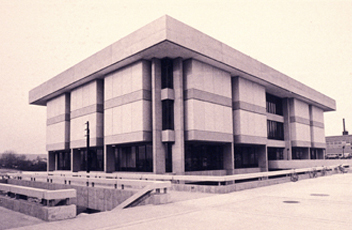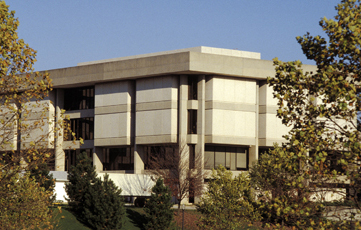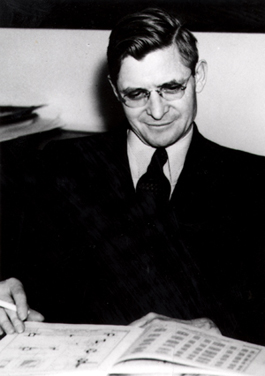 |
|
|
Not flashy but a solid scholar, Clinton Harriman Cowgill founded a sound Department of Architectural Engineering, laying a firm foundation for the College of Architecture and Urban Studies (CAUS), which emerged from his program. Today, in recognition of his role in its creation, part of the college is housed in a building that bears his name.
The modern design of Cowgill Hall in the mid-1960s represented the first major departure from the traditional neo-Gothic architecture that had flourished on campus since the early1900s. Designed by Henry V. Shriver (building design '51; M.Arch. '54), who had studied his craft in Cowgill's shop, the four-story structure has housed architecture programs, architecture faculty, and CAUS administrators since it opened in 1969. Like its namesake, the building has made a lasting impression. In May, it garnered the Test of Time Award from the Virginia Society, American Institute of Architects (AIA).
"It seems to me," wrote AIA President Philip Will Jr. to Cowgill in 1961, "that all my professional life I have been reading your writings and learning your wisdom. That this is true of me suggests that it must also be true of thousands of others. You have, in effect, written 'The Book,' the importance of which is hard to overstate." Architecture Practice stayed in print for more than 25 years. Cowgill also penned Building for Investment and left behind a manuscript for a third book. The groundbreaking professor also presided over the Virginia State Board for Examination and Certification of Professional Engineers, Architects, and Land Surveyors; chaired the National Architectural Accrediting Board; and was a member of the AIA, which recognized his contributions to architectural education by elevating him to fellow status. Cowgill left VPI in 1956 to work as an editor for the AIA in Washington, D.C., before retiring in 1961. He died in 1975. Keeping the building going Even a Test of Time Award-winning building occasionally needs to be spruced up. According to CAUS Interim Dean Jack Davis, "Virtually every unit of the college is affected by moving and renovating space over the next two years." The plan calls for renovation to begin on Cowgill Hall in June 2007 and to be completed in August 2008. Then Cowgill Hall can put forward an even better face to honor the man who set the college in motion. |
||||||||


